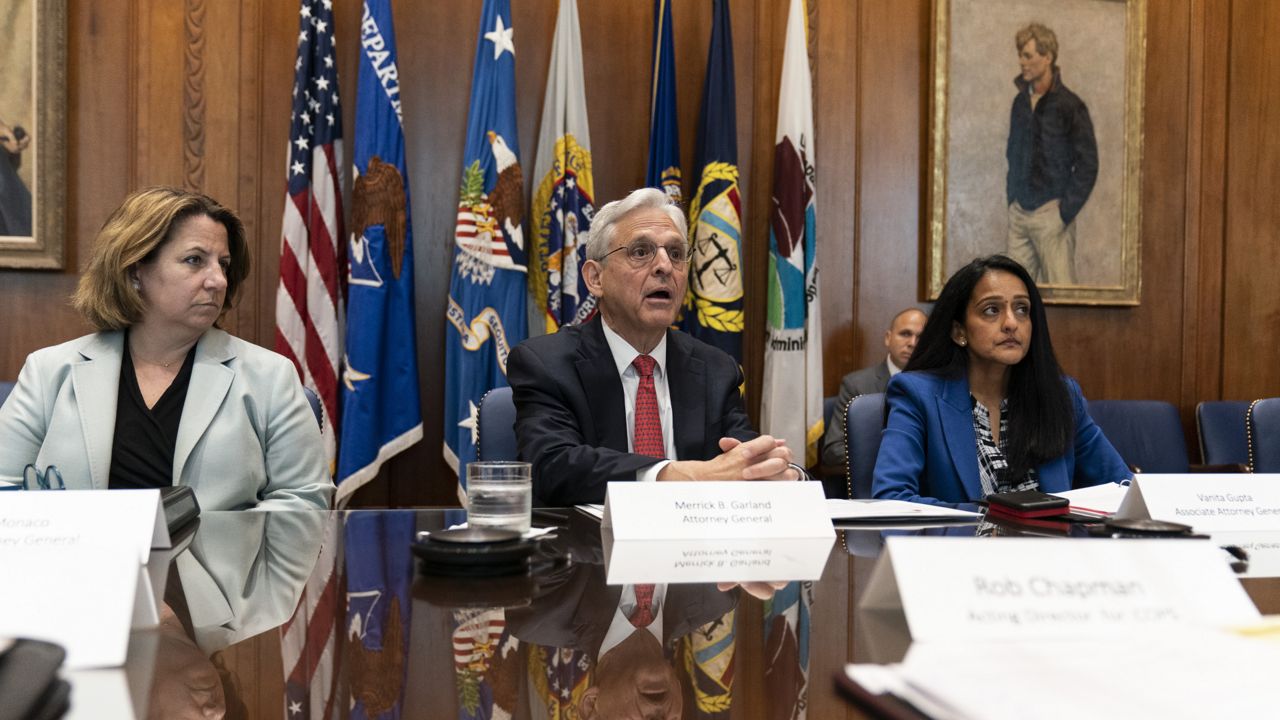Attorney General Merrick Garland on Wednesday introduced the team that will lead the Department of Justice’s investigation into the law enforcement response to the mass shooting at Robb Elementary School in Uvalde, Texas two weeks ago.
It is not a criminal investigation, Garland stressed; rather, the DOJ will conduct a “critical incident review” in order to best understand what happened on May 24 and how to best prevent another such mass shooting.
“There is nothing that we can do that can undo the pain borne both by the survivors, families of victims, and the community and the country,” Garland said Wednesday. “But the independence and transparency and expertise of the Justice Department can go a long way toward assessing what happened in Uvalde with respect to law enforcement response.”
Garland introduced the team who will be working on the review, many of whom have years of experience with mass shootings and other forms of gun violence.
The investigative team includes Orange County Sheriff John Mina, who saw his community through the Pulse nightclub shooting in 2016; Rick Braziel, who served as chief of the Sacramento Police Department from 2008 - 2012; Kristen Ziman, who was chief of the Aurora Police Department in Illinois when a mass shooting occurred at the Henry Pratt Company in 2019; and FBI unit chief Albert Guarnieri, among others.
“As I said, nothing that these folks can do can undo the terrible tragedy that occurred and that we are just heartbroken about. But we can assess what happened and we can make recommendations for the future,” Garland said Wednesday, noting the process will be “comprehensive, transparent and independent.”
The review, which is being conducted at the request of the Uvalde mayor, will be led by the Community Oriented Policing Services office. After conducting site visits, extensive witness interviews and using other resources at their disposal, the DOJ plans to release a public report with findings and recommendations.
Similar reviews have been conducted in the wake of previous mass shootings, Garland noted, including after the Pulse massacre which left 49 dead and 53 wounded.
The Texas Department of Public Safety has been under intense scrutiny in the weeks since the horrific shooting, when a suspect opened fire and killed 19 students and two adults – injuring 17 others – on May 24. In the immediate aftermath of the violence, videos surfaced showing officers appearing to hold frantic parents back from running into the building themselves.
And reports from local officials have been conflicting as well. Texas DPS Director Steven McCraw first said a “brave resource officer” confronted the shooter before he entered the school. Soon after, officials retracted that statement – the resource officer was not, in fact, on campus at the time of the shooting, but was reportedly one of the first back on scene. It is still unclear why the resource officer was away from the school at that time.
The shooter entered the school around 11:33 a.m., approximately two minutes after the U.S. Marshals Service reported receiving calls from Uvalde Police for assistance. Over the next hour and twenty minutes, children called 911 from inside the school begging for help as their classmates were slaughtered.
Police originally indicated they did not breach the classrooms because they believed all the victims to already be dead, even though dispatchers were still receiving 911 calls from inside the building.



